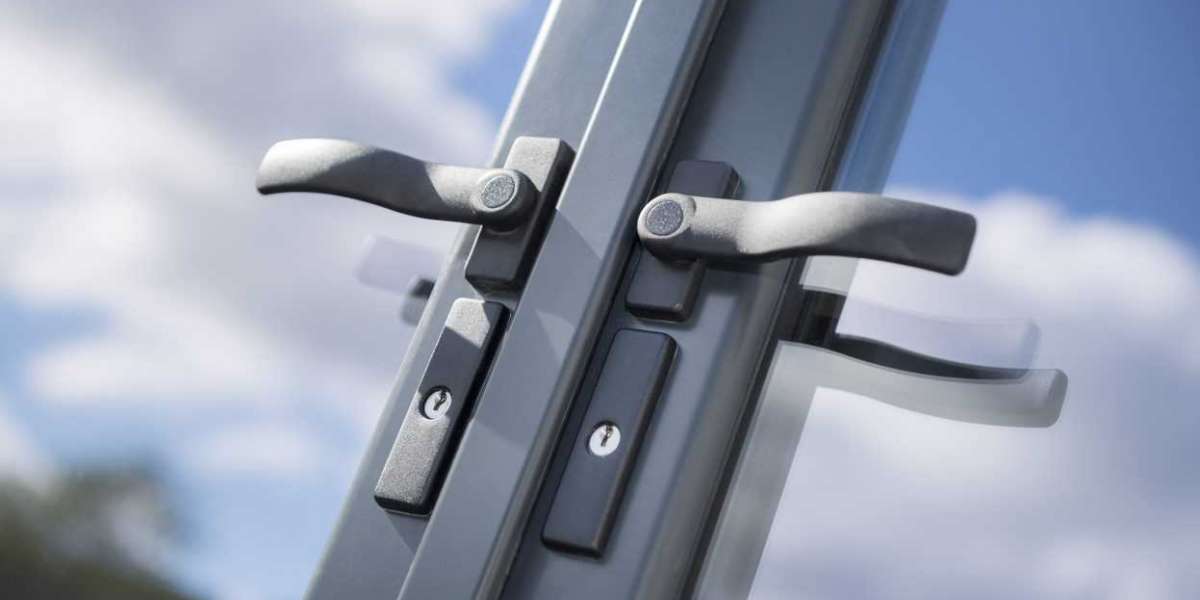
Bi-folding Door Repair: A Comprehensive Guide to Troubleshooting and Maintenance
Bi-folding doors, likewise called folding sliding doors or concertina doors, have risen in appeal in modern-day homes for their capability to effortlessly combine indoor and outside areas. Their extensive glass panels flood spaces with natural light and develop an open, airy feel, making them a desirable function for patio areas, conservatories, and space dividers. Nevertheless, like any mechanical system, bi-folding doors can come across problems with time, needing repair and upkeep to ensure they continue to function efficiently and aesthetically.
This short article acts as a helpful guide to comprehending common issues with bi-folding doors, supplying insights into DIY repair alternatives and when it's best to hire a professional. We will likewise explore preventative upkeep ideas to extend the lifespan and ideal efficiency of these impressive door systems.
Understanding Common Bi-folding Door Problems
Before attempting any repairs, it's vital to determine the specific problem affecting your bi-folding doors. Numerous issues can arise, often originating from wear and tear, misalignment, or inappropriate maintenance. Here are some of the most frequently experienced issues:
- Difficult Operation: Doors become stiff, tough to open or close, or require extreme force. This can be due to friction in the tracks, hinges, or rollers.
- Squeaking or Grinding Noises: Annoying noises during operation frequently show a lack of lubrication, worn rollers, or debris in the tracks.
- Doors Dragging or Catching: Doors might scrape versus the frame, floor, or each other. This could represent misalignment, warping, or damaged rollers.
- Gaps or Draughts: Visible spaces in between door panels or the frame can cause drafts, heat loss, and security issues. This may point to issues with seals, hinges, or the locking mechanism.
- Water Leaks: Water ingress, specifically around the bottom of the doors, might indicate damaged weather seals or drain clogs.
- Locking Problems: Difficulties locking or unlocking the doors can be due to misalignment, a faulty lock mechanism, or concerns with the handle.
- Damaged Rollers or Tracks: Worn, split, or damaged rollers and harmed tracks can seriously impede smooth operation and lead to other problems.
- Loose or Damaged Hinges: Hinges are vital for the folding action. Loose or damaged hinges can trigger doors to sag, bind, and run incorrectly.
DIY Bi-folding Door Repairs: Tackling Common Issues
Many small bi-folding door concerns can be resolved with basic DIY skills and tools. Before beginning any repair, ensure you have the required safety devices, such as gloves and eye defense. Constantly describe the maker's instructions if offered and continue with care.
Here's a breakdown of typical DIY repair jobs:
1. Lubrication and Cleaning:
- Identify Points of Friction: Locate hinges, rollers, tracks, and locking systems where friction seems evident.
- Clean Tracks and Rollers: Use a stiff brush or vacuum to get rid of particles, dust, and dirt from the tracks. For rollers, thoroughly tidy around each wheel.
- Apply Lubricant: Use a silicone-based lubricant specifically developed for windows and doors on all moving parts. Avoid oil-based lubes as they can bring in dust and grime. Spray lube moderately and wipe off any excess.
- Test Operation: Open and close the doors several times to disperse the lube and evaluate if the operation has improved.
2. Changing Rollers:
- Locate Roller Adjustment Screws: Most bi-folding bifold door maintenance roller systems have adjustment screws, typically accessible from the side or top of the door panels. Consult your residential bifold door repairs's handbook if you are uncertain of their location.
- Loosen Up Adjustment Screws: Use a screwdriver or Allen secret to slightly loosen the change screws.
- Adjust Roller Height: Gently adjust the roller height to raise or lower the door panel. This may require minor experimentation. Adjust in small increments and evaluate the door operation after each modification.
- Tighten Up Adjustment Screws: Once smooth operation is attained, securely tighten the modification screws to lock the rollers in place. Guarantee you change all rollers similarly to maintain even weight distribution and alignment.
3. Tightening Hinges and Hardware:
- Inspect Hinges: Check all hinges for looseness or damage.
- Tighten Loose Screws: Use a screwdriver to tighten any loose screws on hinges, handles, and locking systems. Be mindful not to overtighten and strip the screw heads.
- Replace Damaged Screws: If screws are stripped or harmed, replace them with appropriately sized replacements.
- Check Handle and Lock Fixings: Ensure deals with and locking systems are securely attached and functioning properly.
4. Weather Condition Seal Replacement:
- Identify Damaged Seals: Inspect weather seals around the door perimeter for cracks, tears, or degeneration.
- Get Rid Of Old Seals: Carefully eliminate the old weather condition seals, frequently they are push-fit or glued in place.
- Tidy Seal Channel: Clean the channel where the weather seal sits to get rid of any particles or adhesive residue.
- Install New Seals: Cut the new weather condition seal to the correct length and thoroughly push or glue it into the channel, making sure a tight and continuous seal.
When to Call a Professional Bi-folding Door Specialist
While DIY repairs can deal with small problems, particular issues require the expertise of a certified bi-folding door repair professional. Trying complex repairs without the right understanding and tools can get worse the issue and possibly compromise the door's stability and security.
Here are scenarios when professional assistance is highly suggested:
- Significant Misalignment: If you can not resolve dragging, capturing, or gaps with simple roller adjustments, it might suggest a more severe structural concern within the door frame or opening.
- Harmed Tracks or Rollers: Replacing tracks or rollers frequently needs specialized tools and understanding of the door system. Trying this yourself can be challenging and may lead to more damage.
- Complex Locking Mechanism Faults: If you think a problem within the internal locking system or if the locking system is complex, expert medical diagnosis and repair are necessary to maintain security.
- Glass Panel Issues: Never attempt to repair or replace glass panels yourself. Broken or damaged glass panels require expert handling and replacement to make sure security and proper sealing.
- Distorted or Damaged Door Panels: Warped or considerably harmed door panels often require expert assessment to determine the cause and appropriate repair or replacement.
- Repeating Problems: If you find yourself often carrying out the same DIY repairs, it may show an underlying concern that needs professional attention to avoid future issues.
- Doors Under Warranty: Performing DIY repairs on doors still under service warranty may void the warranty. Always consult the service warranty terms before trying any repairs yourself.
Preventative Maintenance: Ensuring Longevity
Proactive upkeep is crucial to avoiding many bi-folding door issues and extending their life expectancy. Regular care can conserve you time, money, and frustration in the long run.
Here are necessary preventative maintenance tips:
- Regular Cleaning: Clean tracks and rollers routinely (at least every couple of months, or more regularly in dirty environments) to avoid particles accumulation.
- Lubrication: Lubricate moving parts (hinges, rollers, locks) at least two times a year, or as required, using a silicone-based lubricant.
- Evaluation of Weather Seals: Inspect weather seals yearly for damage and replace them without delay to avoid drafts and water leakages.
- Inspect Fixings: Periodically examine and tighten screws on hinges, deals with, and locking systems.
- Mild Operation: Avoid forcing the doors open or closed. If they are stiff, investigate the cause instead of applying extreme force.
- Professional Servicing: Consider annual or bi-annual expert maintenance and evaluation, particularly for complex systems, to capture potential concerns early and ensure optimum performance.
Conclusion
Bi-folding doors are a stunning addition to any home, enhancing both aesthetic appeals and performance. Understanding common repair requirements and practicing preventative maintenance will guarantee these doors continue to operate efficiently and reliably for many years to come. While DIY repairs appropriate for small problems, recognizing when to seek expert aid is important for intricate problems and preserving the integrity and security of your bi-folding bifold door repair services system. By combining proactive upkeep with informed repair decisions, you can enjoy the advantages of your bi-folding doors without unneeded hassle and expense.
Often Asked Questions (FAQs)
Q: How often should I lubricate my bi-folding door hinges and rollers?
A: It is recommended to lube bi-folding door hinges and rollers a minimum of twice a year. However, in dusty or coastal environments, you might require to oil them more frequently, perhaps every 3-4 months. Listen for squeaking or stiffness-- these are great signs that lubrication is needed.
Q: What kind of lubricant should I utilize for my bi-folding doors?
A: Use a silicone-based lubricant particularly designed for doors and windows. Silicone lubricants work at minimizing friction and are less likely to attract dust and gunk compared to oil-based lubricants. Prevent using WD-40 as a long-term lubricant as it can dry out and draw in dust.
Q: Can I change bi-folding door rollers myself?
A: Yes, fundamental roller modifications are frequently DIY-friendly. Locate the modification screws (describe your door handbook if required), and use a screwdriver or Allen key to make small adjustments. Remember to adjust all rollers equally and test operation after each change. If you're unsure or the changes don't solve the issue, seek advice from an expert.
Q: How do I tidy bi-folding door tracks?
A: Use a stiff brush or vacuum cleaner with a crevice tool to eliminate dust, dirt, and particles from the tracks. For persistent gunk, you can utilize a damp fabric or moderate soapy water, ensuring you dry the tracks completely afterwards. Regular cleaning is vital for smooth operation.
Q: My bi-folding doors are leaking water at the bottom. What could be the issue?
A: Water leakages at the bottom of bi-folding doors can be caused by a number of concerns:
- Damaged or Deteriorated Weather Seals: Inspect and replace any broken weather seals along the bottom edge of the doors.
- Obstructed Drainage Holes: Check for drainage holes at the bottom track and ensure they are not obstructed by particles. Clear any obstructions to permit water to drain pipes away.
- Inaccurate Threshold Installation: If the threshold is not correctly set up or sealed, water can permeate beneath. This might require professional assessment and correction.
Q: how to repair bifold door much does it normally cost to repair bi-folding doors professionally?
A: The expense of professional bi-folding door repair differs depending on the complexity of the issue, the parts required, and the labor rates in your location. Easy repairs like roller modifications or hinge tightening up might cost around ₤ 100-₤ 200. More complicated repairs, such as track or roller replacement, or fixing locking mechanisms, could vary from ₤ 300-₤ 500 or more. Always get quotes from numerous trustworthy professionals to compare prices and services.








